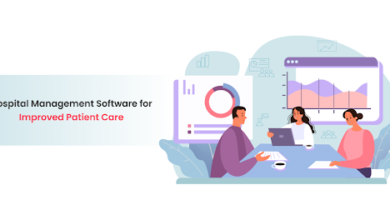Essential Components of Pharmacy Management System Software

An efficient pharmacy management system provides various services, including record-keeping, sales, e-prescribing, and inventory tracking. Using the right PMS software is essential for boosting customer service and increasing revenue. A user-friendly recording system facilitates easy input of patient, drug, and prescription information. A centralized database ensures secure data access and simplifies data search while minimizing the workforce. It also enables the generation of drug reports for business intelligence.
Inventory Management
Pharmacy management systems enable pharmacists to keep track of inventory and sales. They also allow pharmacies to automate processes and improve productivity. In addition, they can help manage prescriptions and provide data analysis tools. A pharmacy management system with dashboards offers quick and easy access to the most important information. Pharmacists can monitor progress and focus on their most critical tasks. The pharmacy software market is growing fast due to the COVID-19 pandemic, which has caused an increased demand for medications. Pharmacies must have reliable pharmacy software to avoid mistakes, such as dispensing the wrong medicine or missing a medication. Additionally, pharmacies must ensure that they have enough supplies to meet the demands of their patients. It is why they need a pharmacy management system that is easy to use and can integrate with existing software.
A pharmacy management system can also help track the quality of pharmaceutical products. It can also help a pharmacy owner determine which supplier to buy from. It is because it can synchronize inventory and enables reports to be generated. It can even identify the best and worst-performing suppliers. Furthermore, software for pharmacy analytics can help to connect with EMR systems. It will help to eliminate any paperwork and increase efficiency. It also helps to reduce the number of errors that can occur while transferring orders to different locations.
Patient Management
Pharmacy management systems are designed to automate a variety of pharmacy workflows. These include reviewing physician orders, preparing prescriptions, controlling inventory, handling billing and insurance, counseling patients, identifying drug incompatibilities, and meeting legal protocols and compliances. These tools allow pharmacies to provide more personalized service and attract new customers.
These systems help pharma businesses stay compliant and increase ROI. A centralized database stores data and makes it easy to retrieve. It eliminates errors and reduces the time to process transactions. In addition, it enables users to obtain critical insights into business performance metrics and build a budgeting roadmap. It also helps in identifying the top-performing pharmaceutical suppliers and optimizes purchasing processes. Pharmacy software can also track drug expiration dates and prevent them from being sold after their expired shelf life. It can also enable e-prescriptions, which eliminate paperwork and improve efficiency. It can also be used to monitor patient adherence and offer programs for health wellness, such as monitoring blood sugar levels in diabetic patients.
Reporting
Providing customers timely notifications based on their preferences helps build personalized relationships and boost customer satisfaction. Pharmacy software with notification features makes this possible through email, SMS, mobile push, etc. Depending on the user’s preference, they can get medication refill reminders, order delivery tracking/status updates, and more. The centralized database feature enables pharmacies to store and manage their drug inventory and sales transaction records in one place. It ensures the safety of sensitive data and boosts the efficiency of business processes. It also allows for easy and quick data retrieval. Moreover, it offers the convenience of auto-generated drug reports, lesser workforce requirements, and improved communication between the staff.
Another important aspect of a pharmacy management system is its ability to track supplier performance and identify reliable and efficient ones. This way, pharmacies can make the best purchasing decisions. It also helps them save money on unnecessary expenses while ensuring they have enough stock to fulfill customer obligations. Expiry management is another crucial functionality that every pharmacy should have. It lets them keep track of the expiry dates of all the medications they sell and alerts them about low stocks well in advance. It ensures that they do not end up selling medicines with expired dates, which can lead to financial losses.
E-Prescription
A pharmacy management system is essential for improving the efficiency and accuracy of pharmaceutical workflows. It lowers inventory costs through automated usage-based reordering, improves expiration date tracking, and increases pharmacy staff productivity by automating satellite inventory management. In addition, it offers a variety of other useful features for pharmacies, such as improved registry and folders management and enhanced compounding support. Another important feature of a PMS is the ability to send prescriptions electronically to patients, doctors, and other healthcare providers. It is a significant improvement over manual processes and can increase patient adherence. In addition, it can save time and money by eliminating paperwork and reducing errors.
A good pharmacy management system should have integrated solutions that offer a range of services beyond its basic software. It includes delivery and shipping solutions, a mobile app for ordering and setting reminders, and several third-party vendor interfaces. These integrations can help pharmacies increase customer satisfaction and profitability. They can also help them better understand and manage medication adherence habits and build personalized customer relationships. For example, pharmacies can use the data from their PMS to differentiate repeat buyers from new ones and create unique marketing strategies that suit their needs. They can also use the data to identify potential drug interactions. This way, they can alert physicians to possible side effects or warn patients of drug interaction risks.





